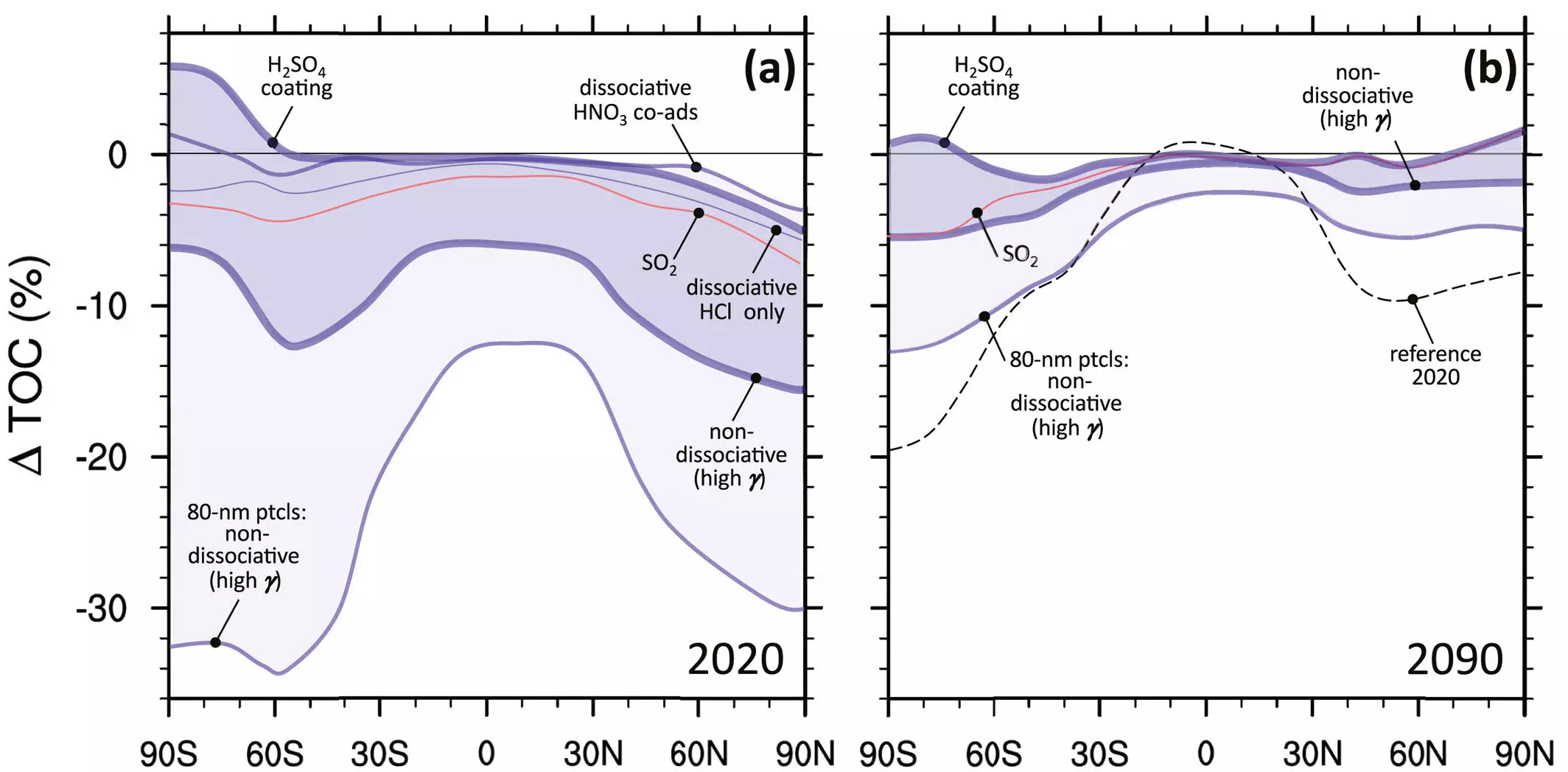As the levels of greenhouse gases continue to rise in Earth’s atmosphere, scientists are exploring various strategies to mitigate the effects of global warming. One proposed idea is the injection of aerosols into the stratosphere to reflect sunlight and reduce the overall temperature increase. While previous studies have focused on using gaseous sulfur dioxide, recent research suggests that solid materials, such as alumina, calcite, or diamond particles, may be more effective at cooling the climate while minimizing side effects. However, there is limited knowledge regarding the impact of injecting solid materials on the stratospheric ozone layer, and understanding this relationship is crucial for successful climate intervention.
The current understanding of the consequences of injecting solid materials into the stratosphere is derived from limited, decades-old experimental data involving alumina particles emitted through solid-fuel space rocket exhaust. A recent study conducted by Sando Vattioni and colleagues sheds light on the disparities between alumina injection scenarios and the conditions resulting from space shuttle exhaust plumes.
One advantage of injecting alumina particles, as opposed to gaseous sulfur dioxide, is the potential for reduced local stratospheric heating. However, the researchers emphasize that there are “significant uncertainties” associated with estimating the impact of alumina injections on the ozone layer.
The scenarios tested by Vattioni et al. involve injecting approximately 5 megatons of alumina particles into the stratosphere annually, which would offset about a quarter of the current radiative forcing caused by anthropogenic greenhouse gas emissions. However, the study estimates that global mean ozone loss from these scenarios could range from negligible to as much as 9%. This potential loss is nearly twice the historical peak of ozone depletion resulting from chlorofluorocarbons in the 1990s.
Further research is necessary to understand the potential surface reactions of solid particles in the atmosphere. Specifically, scientists need to investigate surface reactions under both present and future stratospheric conditions, considering factors such as temperature, trace gas concentrations, and relative humidity. This improved understanding will help reduce the uncertainty surrounding the behavior of solid particles when injected into the stratosphere for climate intervention purposes.
As the global climate continues to change, exploring innovative strategies for mitigating the effects of global warming becomes increasingly critical. Injecting solid materials into the stratosphere shows promise in terms of cooling the planet and reducing local stratospheric heating. However, the potential implications for the ozone layer remain uncertain, necessitating further research on surface reactions and the overall impact of solid material injection. By gaining a comprehensive understanding of how these materials interact with the atmosphere, scientists can better assess the risks and benefits of this approach to climate intervention.


Leave a Reply